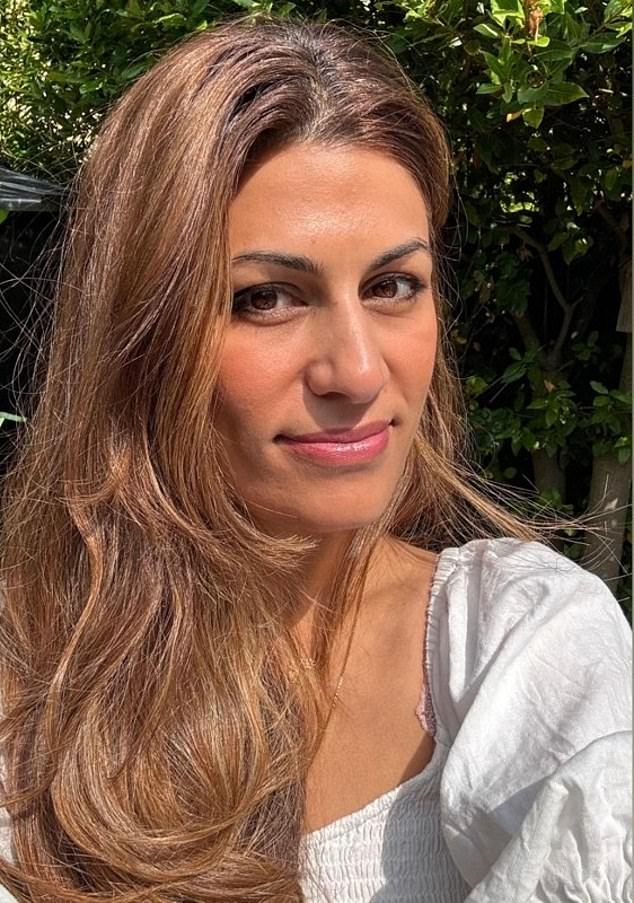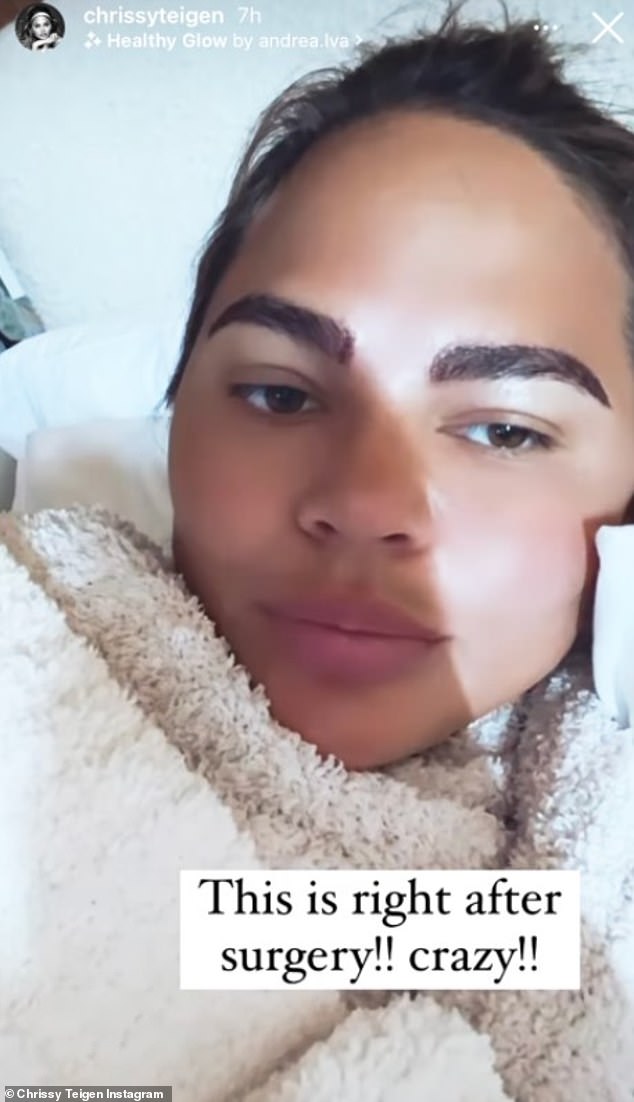Model Chrissy Teigen has thick, enviably perfect eyebrows, but it wasn’t always that way.
In 2021, Teigen took to social media to reveal that she had undergone an eyebrow transplant, in which hairs from the back of the scalp are used to fill in sparse eyebrows.
Teigen said years of over-plucking had caused such significant thinning in her eyebrows that before the transplant she had to resort to penciling them every morning, and urged her followers to learn from her mistakes.
But it’s not just about over-plucking: just as the hair on your head can thin with age, so can the hair on your eyebrows, and it can be a sign of a medical condition. It can also occur without losing hair on the head.
Whatever the cause, when it happens, for many the impact of losing eyebrows is greater than being “just” a cosmetic issue: dermatologists and trichologists (non-medical specialists in hair and scalp health) report growing concern about this among his patients. – which is driving a growing demand for eyebrow transplants. In fact, 11 percent of all hair transplant surgeries in women are now eyebrow transplants, according to 2022 figures from the International Society for Hair Restoration Surgery.
“The (psychological) impact on patients is often significant, as the loss of eyebrows can greatly impact self-confidence and body image,” says Dr Ellie Rashid, consultant dermatologist at Guy’s and St Thomas. ‘ NHS Foundation Trust and OneWelbeck Health in London.
‘Eyebrows are a key feature in framing the face, and thinning them can make people feel less expressive or less refined.
“Many patients report spending more time trying to fill in their eyebrows with makeup or seeking cosmetic procedures to restore the fullness they’ve lost, which can add stress to their daily routine.”
In 2021, model Chrissy Teigen took to social media to reveal that she had undergone an eyebrow transplant, in which hairs from the back of the scalp are used to fill in sparse eyebrows.
Although men and women can be affected, eyebrow loss “tends to affect women more frequently, especially in their 30s and 40s, often due to hormonal changes such as those associated with menopause,” says Dr. .Rashid.
“However, men can also experience this condition, and it is more commonly seen as people age… (when) hair follicles (the type of pore from which hair grows) become less productive, leading to finer, less pigmented hair.”
Eyebrow loss can occur whether someone suffers from head hair loss or not.
In some cases, hair loss is gradual, in other cases, it can occur in a matter of months.
“Patients often describe empty spaces or thinning of the eyebrows, or thinning of a particular part of the eyebrows, such as the outer third of the eyebrows, or sparse eyebrow hairs in general and, in more severe cases, no eyebrows.” “says Dr. Rashid.
The concern about this goes beyond its psychological impact, as losing your eyebrows specifically could be a sign of an underlying health problem, Dr. Rashid adds.
These range from autoimmune conditions, thyroid or inflammatory skin conditions to nutritional deficiencies, particularly in iron and zinc (although in the case of nutrient deficiencies, you’ll likely see hair loss elsewhere as well).
“Autoimmune diseases such as alopecia areata can cause patchy hair loss, including eyebrow hair loss,” says Dr. Rashid.

Dr Ellie Rashid, consultant dermatologist, says eyebrow loss can greatly affect people’s self-confidence and body image.
This is because the immune system becomes overactive and mistakenly attacks the hair follicles, causing inflammation and damage, resulting in hair loss.
It is not known what causes alopecia areata, but both genetic and environmental factors may contribute.
For some women, menopause can be a trigger and although this usually only causes hair loss on the scalp, in some cases the eyebrows can also be affected.
There is also a lesser-known form of alopecia that is more likely to affect the eyebrows, says Dr. Rashid.
‘Another cause of eyebrow hair loss is frontal fibrosing alopecia (FFA), a scarring form of hair loss (meaning the hair cannot grow back) that usually affects postmenopausal women and involves a inflammation that causes the immune system to attack the hair follicles, causing complete loss of eyebrow hair, especially on the outer edges.
Unlike alopecia areata, which tends to cause patchy hair loss all over, FFAs primarily affect the front of the scalp and forehead, looking like a receding band of hair in this area. A study published in the Journal of the American Academy of Dermatology in 2022 found that up to 96 percent of FFA patients experience eyebrow hair loss. And more cases of this condition are being reported, according to a 2020 review published in the journal Advances In Dermatology And Allergology. Hormonal changes are thought to be a factor in FFA, but a definitive cause is unknown.
Thinning eyebrows can also be the first outward sign of other underlying health problems, as 53-year-old Sally Woods discovered.
“I started losing the tips of my eyebrows about seven years ago… I was very aware of it at first, as I wasn’t wearing glasses at the time, so it was very noticeable,” says Sally, a legal secretarial supervisor. of Bedfordshire. ‘I felt really exposed. I used to draw them with eyebrow pencil.
Initially he accepted it simply as a part of aging. Then, earlier this year, she heard a doctor on TV mention that thinning eyebrows may be a sign of a thyroid problem.
This is not unusual, says Dr. Rashid. “Hormonal changes, particularly thyroid dysfunction or menopause, can play an important role, with hypothyroidism (an underactive thyroid gland) being a common cause of thinning of the outer third of the eyebrows.”
This occurs when the thyroid gland in the neck stops producing enough hormones that control how our body uses energy. Symptoms can be subtle (in addition to losing eyebrows, they include dry skin, a bad mood, and feeling cold and tired), but if left untreated, they can lead to heart disease, infertility, and a rare but life-threatening condition called myxedema coma. , when organs begin to fail due to thyroid hormone deficiency.
Sally had already had “borderline” blood test results indicating an underactive thyroid, but it wasn’t until she heard the link to the loss of her eyebrows that it “made sense” to her. Two months ago she saw her doctor again and they confirmed her hypothyroidism.
He was started on levothyroxine, a drug that replaces the missing hormone, thyroxine, to treat the condition. ‘We’re waiting to see if things get better… but I can definitely see my eyebrows growing!’ she says.
So what can you do if you are losing your eyebrows? You may be tempted to buy over-the-counter eyebrow serums that promise to help your eyebrows grow back, or sign up for microblading (a type of eyebrow tattooing to disguise missing hairs) or even an eyebrow transplant, at a cost of thousands of dollars privately. But while these may improve the “look” of your eyebrows, none are a medical solution to any underlying medical problem. For a treatment that gets to the root of the problem rather than focusing solely on improving appearance, consult your GP.
“For some, topical treatments such as minoxidil (a solution applied to the skin once or twice a day) can help stimulate growth, while patients with alopecia areata may benefit from steroid creams or injections to stimulate hair recovery,” says Dr. Rashid.
This is because steroids can reduce the inflammation that causes hair loss.
“If the cause is related to a medical condition such as thyroid dysfunction (or a nutrient deficiency), it is important to address the underlying problem,” he adds.

